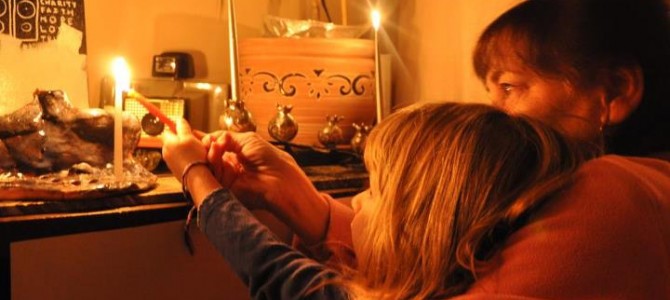What is happening in New York City preschools is either a form of American-style religious syncretism or a tightening church-state death grip on theology. It’s hard to tell which (and it could be both), but it’s all bad.
The New York Times discusses one effect of Mayor Bill De Blasio’s push to speedily expand government preschool: Contracting with private preschools to handle the influx of tiny students. Government schools simply can’t expand fast enough to handle all the small people de Blasio wants to shove into non-family care. So, to meet his enrollment goals, the city is contracting with private preschools. That’s actually a typical arrangement for government preschool programs, and other education programs targeted at special populations such as dropouts, problem students, special-needs children, etc. But because most private schools are also religious schools, the NYC program has led to city government dictating what parts of religious belief are acceptable to teach children during government-funded hours and which are not.
In other words, government is telling people which religious beliefs they can and cannot express, and how. In Jewish yeshivas, for example, no more Seder ceremonies. But teaching the history of Seder is fine. Catholic schools have to take crucifixes off their walls in some classrooms, but not all. Small stars of David are okay. Large ones are not.
Why this isn’t creepy to religious leaders says a lot about both them and NYC bureaucrats. Both seem to accept the premise that the state has a right to tell people how to conduct their religion, and when and where they are allowed to express it, as long as taxpayer money is involved somewhere. And, today, taxpayer money always seems to be involved everywhere.
Non-Religious Schooling Doesn’t Exist
This sort of entanglement between church and state is not only dangerous to both, it doesn’t make any sense. As Cathy Rolland, director of early childhood engagement for the Union for Reform Judaism told the Times, “You just can’t separate out the religious piece. We don’t teach Judaism; we weave Judaism into our work.” Religion is not bits and pieces of cultural artifacts and distended practices. The world’s major religions are holistic approaches to life and everything in it. It is impossible to chop them up into “culture and history” and “religious practice.” The two are one, just as human beings are both body and soul, unified. And government has no place telling people what to believe and how that means they should conduct themselves, especially in something so intimate and personal as passing that heritage on to one’s children.
Many Americans believe public schools are religiously neutral. That’s not only wrong, it’s impossible. In 1961’s McGowan v. Maryland, the U.S. Supreme Court described religion as an “activity that profoundly relates the life of man to the world in which he lives.” Every school helps children understand their universe and place in it. If it did not, we would not consider it much of a school. And every school teaches students morals and politics, which is the same as saying all schools teach students about man and God. If they do not do so explicitly, they do so implicitly.
Consider an example. The dominant teaching philosophy for the past 60 years or so goes by various names, but a descriptive one is “child-centered learning.” It aims for student-led, not teacher-led classrooms, which is why, among other things, you almost never see desks in rows anymore, but rather in circles and scatters to emphasize that children are driving their education. This arrangement reflects assumptions about human nature, which is at root a religious consideration. It assumes, contrary to most major religions, that children are naturally good and wise enough to direct their own learning.
The Noble American Lie
Americans insist on pretending one can educate a child without religion, probably because if we acknowledged that as impossible our current system of public education could not coexist with our legal and cultural resistance to mixing church and state. The American mind in this respect mimics the culture of ancient Rome: Got a god? Got no god? Go ahead and add your religious beliefs to the religious menu! We tolerate every faith or lack thereof (except those Christians who insist that their god has exclusive rights to god-ness—now, that’s just intolerant).
From our founding Americans have insisted it’s possible for government to be neutral on questions of religion. That works a lot better, of course, when government doesn’t do very much. But when government runs an education monopoly, it can pick religious winners and losers for essentially the entire K-12 population (which currently stands at about 48 million kids). Previously, U.S. public schools picked WASPism as the winning religion, which rather nastily shut out Catholic kids, and is why Catholic schools have flourished for so many decades as an independent network. Currently, atheist humanism seems to be public schools’ dominant religion, at least if one pays attention to the courts.
But a system of public education can coexist with religious freedom. Rather than having government co-opt overtly religious education providers, as in New York City, or force those who wish their children to learn a different religion than the dominant one within public schools, public education could really be neutral. It could let families take their education funds to schools of any religion, including the religion of nonreligion. Then government wouldn’t be picking religious winners and losers, or descending into doctrinal disputes. Individuals could do so, without coercion. That would really comply with the First Amendment’s guarantees of religious freedom (and the Supreme Court has already ruled so). Then schools and families wouldn’t have to be hypocrites, and bureaucrats couldn’t run about, deciding according to what whim pleases them how big a Star of David is “too big.”









